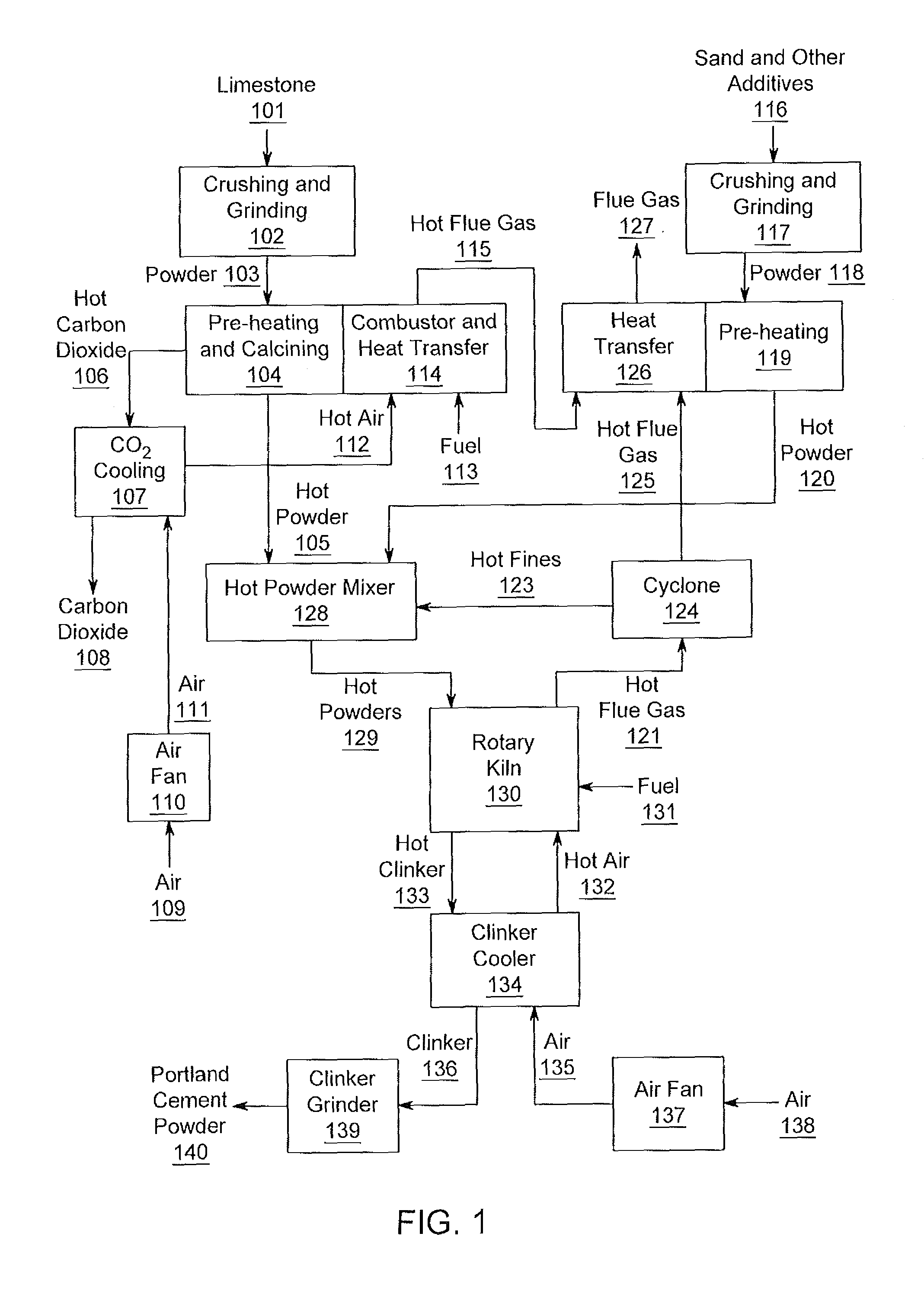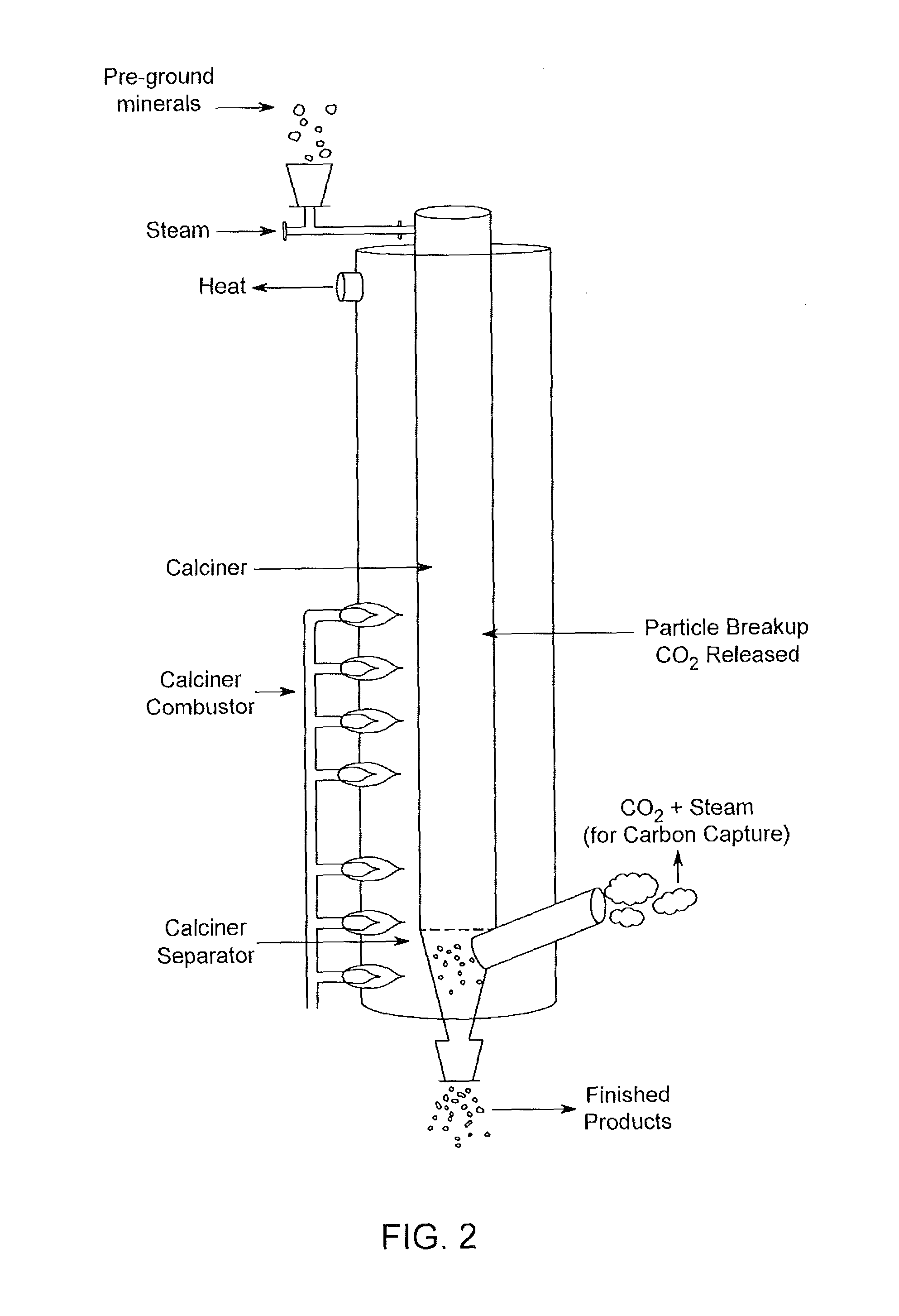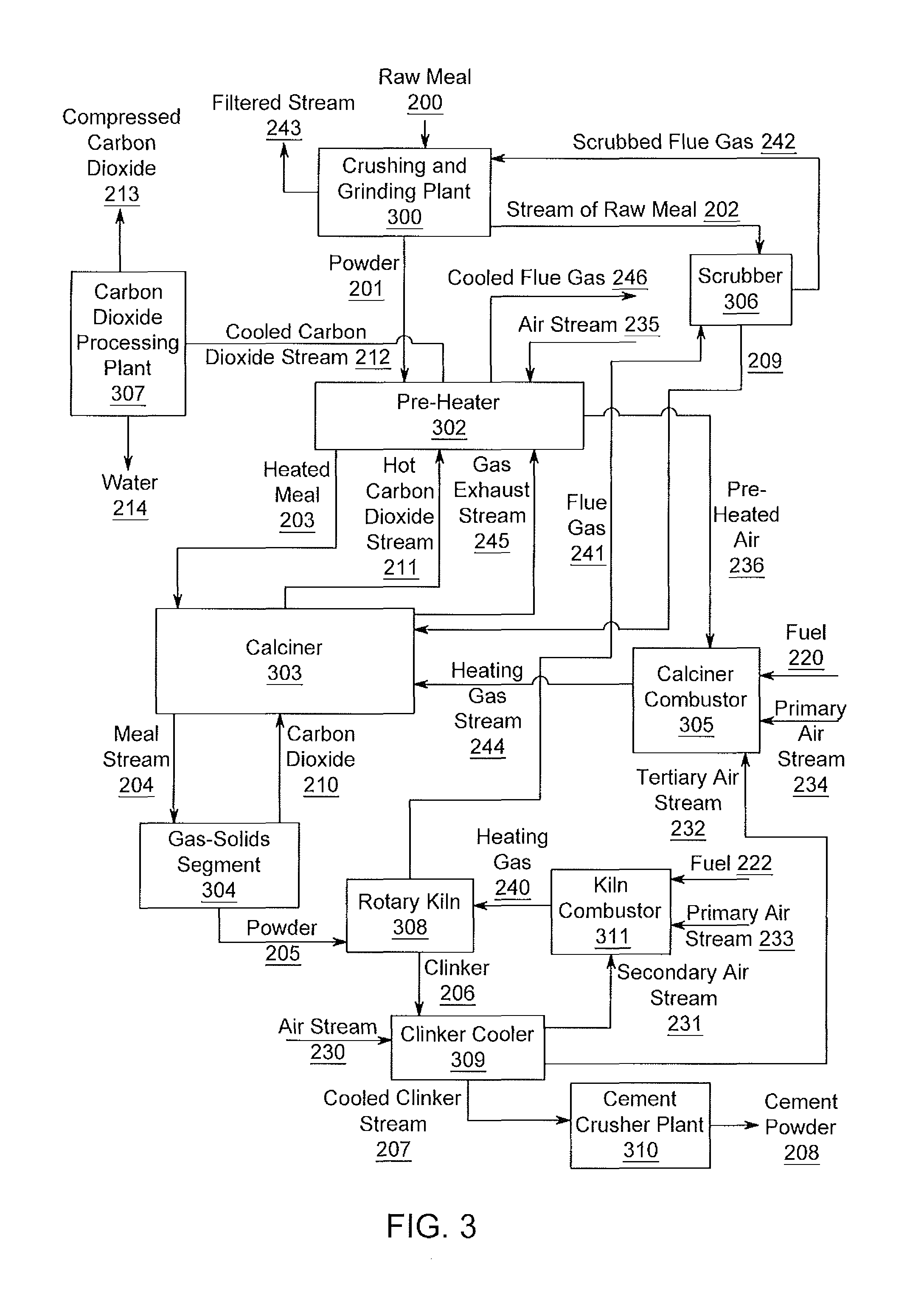Process and Apparatus for Manufacture of Portland Cement
a technology of portland cement and process equipment, which is applied in cement production, clinker production, carbon capture, etc., can solve the problems of high capital cost, large size and cost of the plant, and inability to achieve substantial reductions by incremental improvements. , to achieve the effect of reducing carbon monoxide emissions
- Summary
- Abstract
- Description
- Claims
- Application Information
AI Technical Summary
Benefits of technology
Problems solved by technology
Method used
Image
Examples
Embodiment Construction
[0053]The invention required to manufacture of Portland cement can be described by consideration of the process flow of FIG. 1.
[0054]In this embodiment, the raw limestone rock 101 is crushed and ground in a crushing and grinding plant 102 to a powder 103 with a particle size less than 100 microns. This plant 102 may be the same as used in a conventional Portland cement process.
[0055]The limestone powder stream 103 is processed in a counter-flow indirect pre-heater and flash calciner 104 to produce a hot lime stream 105 and a separate hot CO2 stream 106. This hot CO2 stream is cooled in a gas-gas heat exchanger 107 to produce a cool CO2 gas stream 108, which can be further cooled and compressed, and liquefied if required. To reduce the carbon footprint from Portland cement production, this gas stream 108 is not emitted.
[0056]The air input 109 for cooling the CO2 is pressurized by a fan 110 and the air stream 111 is heated in the gas-gas heat exchanger to provide a pre-heated air stre...
PUM
| Property | Measurement | Unit |
|---|---|---|
| particle size | aaaaa | aaaaa |
| temperature | aaaaa | aaaaa |
| temperature | aaaaa | aaaaa |
Abstract
Description
Claims
Application Information
 Login to View More
Login to View More - R&D
- Intellectual Property
- Life Sciences
- Materials
- Tech Scout
- Unparalleled Data Quality
- Higher Quality Content
- 60% Fewer Hallucinations
Browse by: Latest US Patents, China's latest patents, Technical Efficacy Thesaurus, Application Domain, Technology Topic, Popular Technical Reports.
© 2025 PatSnap. All rights reserved.Legal|Privacy policy|Modern Slavery Act Transparency Statement|Sitemap|About US| Contact US: help@patsnap.com



